Your customers’ data, from lead capture to post-purchase, has huge potential for your company ... IF it’s managed correctly. I once worked at a company that treated customer data like a grocery store receipt, chucking it in the back seat of the car with a vague “I’ll find it there later if I need it” approach. This annoyed employees to no end and left money on the table for how well we could’ve served our audience.
Those who are new to customer data management have no time to waste: Consumers are becoming more aware and critical of how their data is being gathered by companies. Governing bodies are creating more protective laws, and this shift is ultimately making the customer data that you have even more valuable.
![Download Now: Introduction to Data Analytics [Free Guide]](https://no-cache.hubspot.com/cta/default/53/8982b6b5-d870-4c07-9ccd-49a31e661036.png) Let’s get into what an effective customer data management strategy looks like and which tools you can use to make it easier.
Let’s get into what an effective customer data management strategy looks like and which tools you can use to make it easier.
Table of Contents
- What Is Customer Data Management?
- Why Is Customer Data Management Important?
- Experts’ Best Practices for Customer Data Management
- Why a Customer Data Management Tool Can Help
- How to Choose a Customer Data Management Platform
- Hit the Ground Running
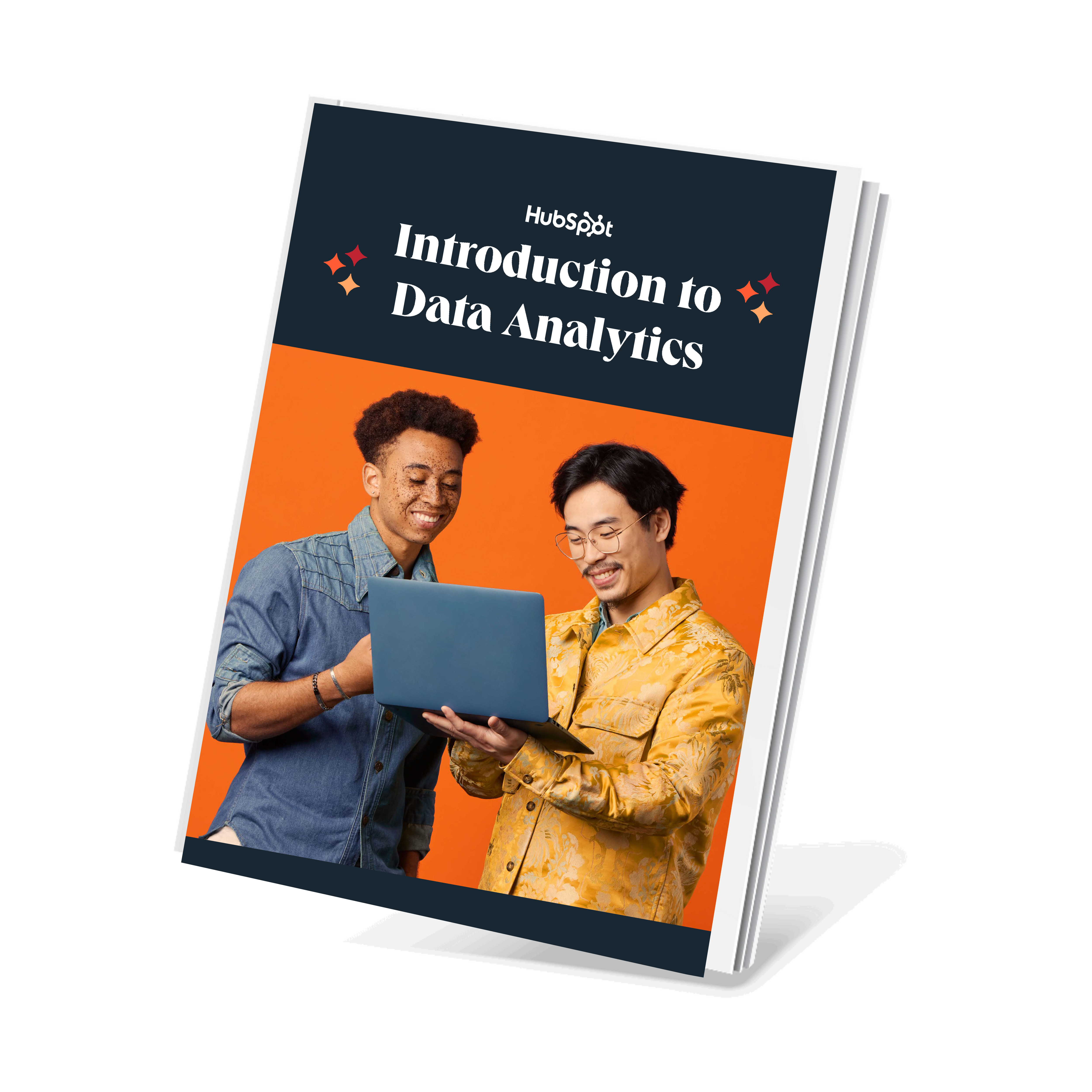
An Introduction to Data Analytics
Unlock the power of data and transform your business with HubSpot's comprehensive guide to data analytics.
- Fundamentals of data analytics
- Different types of data analytics
- Data visualization
- And more!
Download Free
All fields are required.

What Is Customer Data Management?
Customer data management is the process of gathering, storing, and interpreting customer information. The data can be first, second, or third-party data. Common types of customer data include:
- Behavioral data.
- Transaction data.
- Interaction data.
- Descriptive data.
- Customer interactions.
- Identity data.
Companies must handle data collection and governance with care to keep their customers’ information secure and private.
Why Is Customer Data Management Important?
The benefits of customer data can’t be understated — customer data is essential for scaling any business’s revenue. Without customer data, decisions around product improvements, new offers, paid advertising, etc. are based on guesswork instead of facts. Customer data is used to steer investments and measure output for sales and marketing teams.
It’s also a valuable ingredient in building and maintaining customer relationships. All modern customer service software (like HubSpot Service Hub) and customer relationship management tools (like HubSpot CRM) rely on customer data for:
- Improving the overall customer experience.
- Responding to customer inquiries.
- Re-engaging existing customers.
- Managing inbound leads.
Now that you understand its importance, I’ll share some top customer data management best practices according to data experts, business owners, and marketing professionals.
Experts’ Best Practices for Customer Data Management
Collecting data is the easy part of the process. Managing customer data and turning it from a pile of numbers into actionable information is the tricky part but absolutely essential. These are the top five tips for managing customer data I collected from experts.
Identify a “customer.”
Your company can’t get coherent, actionable customer data without having a single source of truth. This starts with your definition of a customer. “I believe the most important practice in customer data management is establishing a unified, consistent definition of ‘customer’ across the entire organization,” Binod Singh, founder of Cross Identity, shared with me.
Sales might define a customer as anyone who’s purchased in the last five years, while marketing might only consider customers active if they’ve engaged in the past year. Without a common definition, it’s easy for data to become fragmented or for teams to make decisions based on incomplete or inconsistent data.
Binod Singh explained how he handles this challenge at his company: “We try to focus on creating a company-wide standard for customer status and criteria, so every team can confidently work from the same 360-degree view. This alignment allows us to provide personalized and relevant interactions across channels, which I believe is crucial to improving customer experiences.”
Ensure real-time updates.
The information you get out of your customer data management systems is only as good as the information you put in. I think the best way to manage your customer data is to always prioritize accuracy and real-time updates — the result is a comprehensive picture that empowers decision-making.
“If you aren’t focusing on accuracy and real-time updates, you run the risk of eroding trust with your customers by making mistakes in your engagement,” shared Laura Hill, marketing manager at KNB Communications.
“When your data is accurate and up-to-date, you’ll be able to have more meaningful and genuine interactions, which leads to better outcomes.” Laura recommends that you consistently clean, standardize, and review your data.
Segment users.
Prioritizing segmentation in your customer data strategy creates opportunities for personalized customer experiences, such as sending customers personalized emails or targeting them with relevant promotions.
Josh Neuman, founder of Chummy Tees, shared an example of how this looks in his business: “Whenever someone buys one of our funny or custom tees, we tag their preferences — whether it’s based on design style, purchase frequency, or even the time of year they tend to shop. For example, we’ll send new animal-themed designs to people who’ve bought cat or dog shirts in the past.
“Segmentation ensures we don’t waste time or money on campaigns that won’t land. Plus, it keeps customers engaged by showing them stuff they actually care about.”
Track silent data.
I know it’s natural to focus on the loudest numbers when you start to analyze customer data, but Jake Ward, founder of Kleo, recommends an unconventional approach: actively engaging with the silent data.
“What I mean by this is focusing not just on the obvious metrics like open rates or clicks but on the data that isn’t making noise,” Jake told me. Listening to the noisy and silent data in your business can look like:
- Engagement and disengagement.
- Purchases and abandoned carts.
- Clicks and hovers.
“It’s about reading between the lines of your data and acting on the gaps, not just the spikes,” explained Jake. “That’s where the real value lies — finding the trends in what’s not happening.”
Use a data classification system.
A proactive approach to customer data management is implementing a data classification system. Adhiran Thirmal, solutions engineer at Security Compass, encourages you to think about it this way:
“Consider it like packing up your data in tidy boxes according to how sensitive it is and under what regulations. When you separate data into types — personal, financial, or otherwise not sensitive — you can then implement the appropriate protections and permissions.”
Not only is this a great practice to ensure that personal data isn’t hacked, but it makes it easier to meet GDPR and HIPAA regulations as well. I think it also promotes an organizational culture of accountability so everyone knows that data needs to be handled carefully.

An Introduction to Data Analytics
Unlock the power of data and transform your business with HubSpot's comprehensive guide to data analytics.
- Fundamentals of data analytics
- Different types of data analytics
- Data visualization
- And more!
Download Free
All fields are required.

Why a Customer Data Management Tool Can Help
Customer data management platforms take a complex, multi-dimensional task and simplify it into a single source of truth for your organization; it’s the glue that holds your overall strategy together. A tool guides you through important decisions like how data will be:
- Collected from customers.
- Organized and sorted.
- Accessed by team members.
- Secured and protected.
There are countless customer data management tools on the market — we share details of our top picks in our data management platforms guide, and I’ll also share overview recommendations below.
How to Choose a Customer Data Management Platform
What should you look for in a good data management platform? Here are the qualities I’ve found the good platforms will have.
Aggregated Data
An effective tool will pull all available customer information from diverse data points to create one single source of truth for your company. This includes first-, second-, and third-party data. Data options also include structured, unstructured, and semi-structured data, as well as “big” and “small” data, with companies shifting towards small data.
Statistic: Gartner predicts that by 2025, up to 70% of organizations will shift focus from big data to small data.
While a high-level understanding of these data types and how they work is beneficial, a good tool will help educate your team and aid in decision-making.
Consider: Google BigQuery, a data management platform that gathers data from diverse points and helps businesses unlock their data potential.
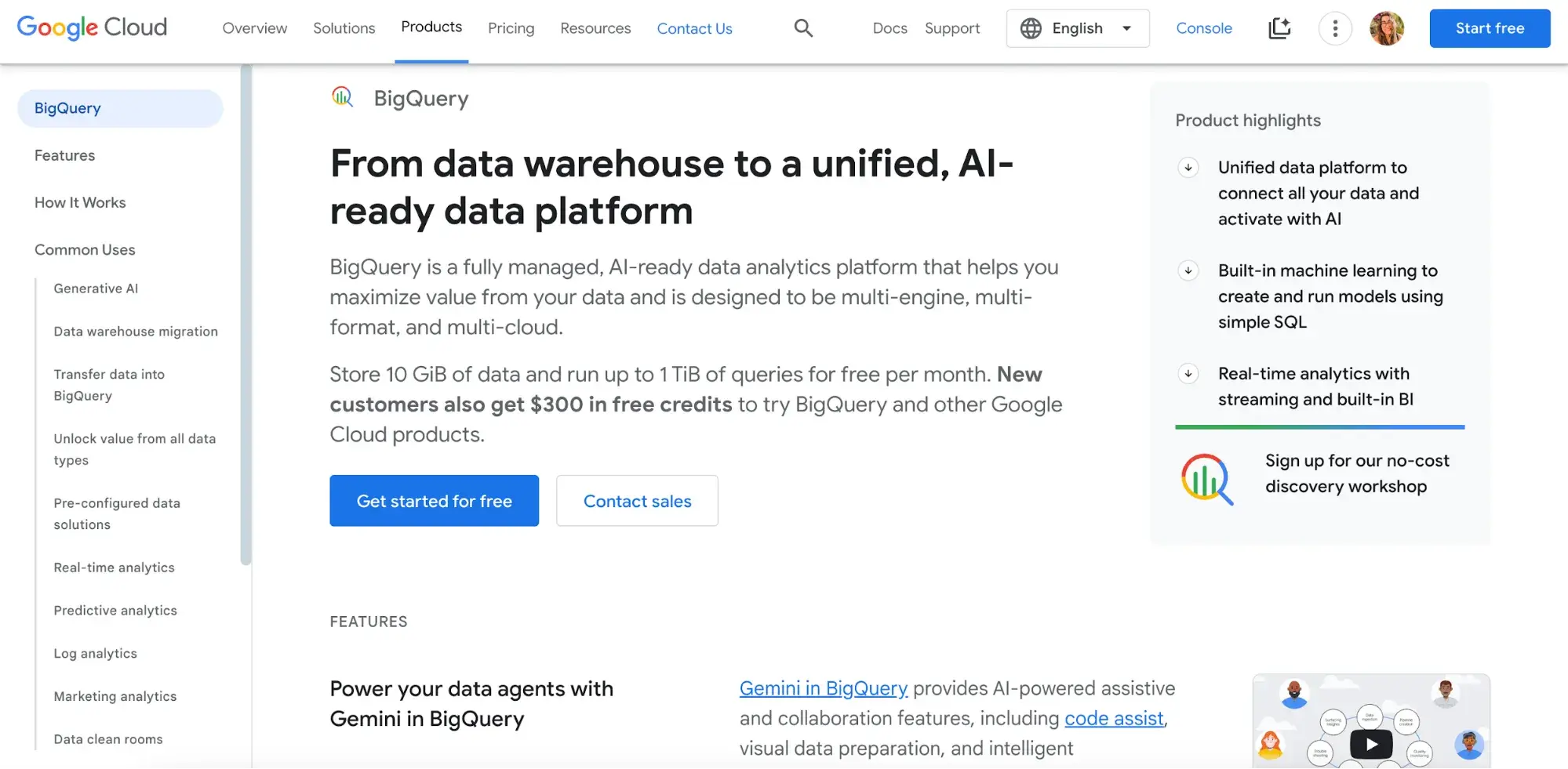
Legal Regulations
Legal compliance isn’t a one-time fix — it’s a moving target. Standards are actively changing as new laws are introduced, and they also vary depending on the location of your customers.
You may have heard of GDPR or CCPA regulations — those common abbreviations stand for General Data Protection Regulation (in the European Union) and the California Consumer Privacy Act (California only). Data tools need to be aware of and in strict compliance with these laws based on customer location.
The market is being flooded with AI-generated data tools that may or may not be compliant with current laws. Plus, even big data companies get it wrong sometimes. I received a $500 payout from a class-action lawsuit against Facebook when it unlawfully collected and stored data from Illinois residents.
Remaining lawful in your data management strategy is non-negotiable. A good data management system understands the past, present, and future of lawful data collection.
Consider: Adobe Audience Manager for its data governance and leadership in the industry.

Data Governance
I mentioned that Adobe Audience Manager has built-in data governance, but what does that mean? While governing bodies regulate how data can be collected and used externally, each company’s data governance strategy decides how that will be done internally.
If you’re a small business, startup, or bootstrapped business, I’ve learned firsthand that digging into the nuances of data governance is a task that’s very costly to your time. Using a tool that has built-in governance will provide a framework for data quality, usage, and stewardship.
Consider: Adobe Audience Manager or IBM Db2® Hybrid Data Management for advanced data governance strategies.
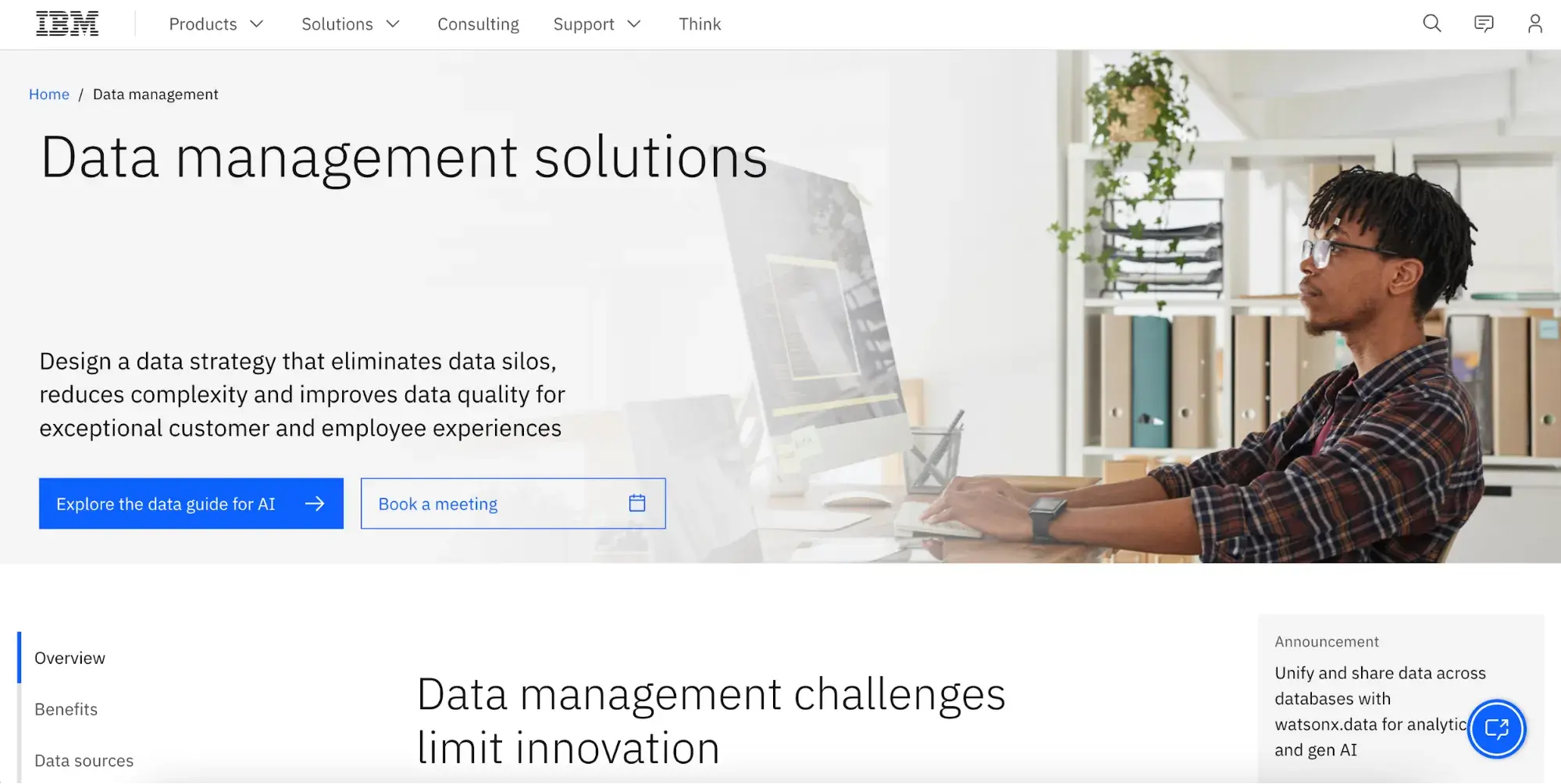
Scalability
As your company grows, so do your data management needs. This makes scalability a huge perk for startups and rapidly-growing companies, and a step in future-proofing your investment.
A scalable customer data management tool is robust enough to handle mass quantities of data elegantly without slowing down or creating data silos, while also being responsive enough to handle changes. I suggest growing companies look for reliability, consistency, and scalable pricing.
Consider: Salesforce Customer 360 for its scalability and enterprise packages. I first used Salesforce when I was working at one of the largest nonprofits in the U.S. — its bandwidth can handle small businesses all the way up to major ventures.
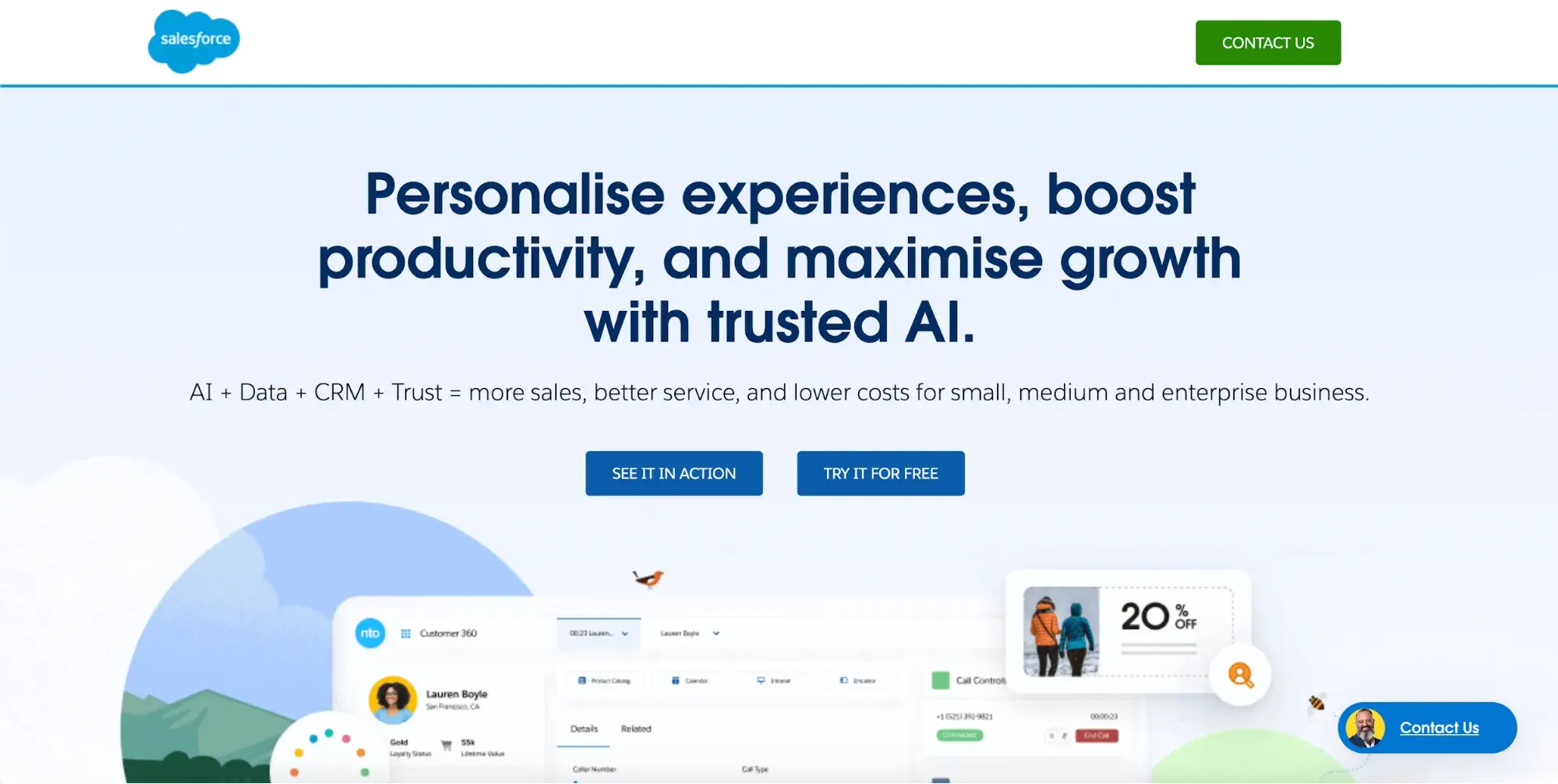
Security
It feels like there’s a new data breach in the news every other week, partially because threats are constant and partially because not all companies prioritize data security.
Statistic: Email is the most common vehicle for malware, and 94% of organizations have reported email security incidents.
Security matters for everyone, but it’s particularly important for companies that process sensitive data such as medical or financial records. A data breach isn’t always 100% preventable, but companies reduce their odds of it happening to them when they invest in data management software that prioritizes security.
Consider: Snowflake for its encryption and data protection.
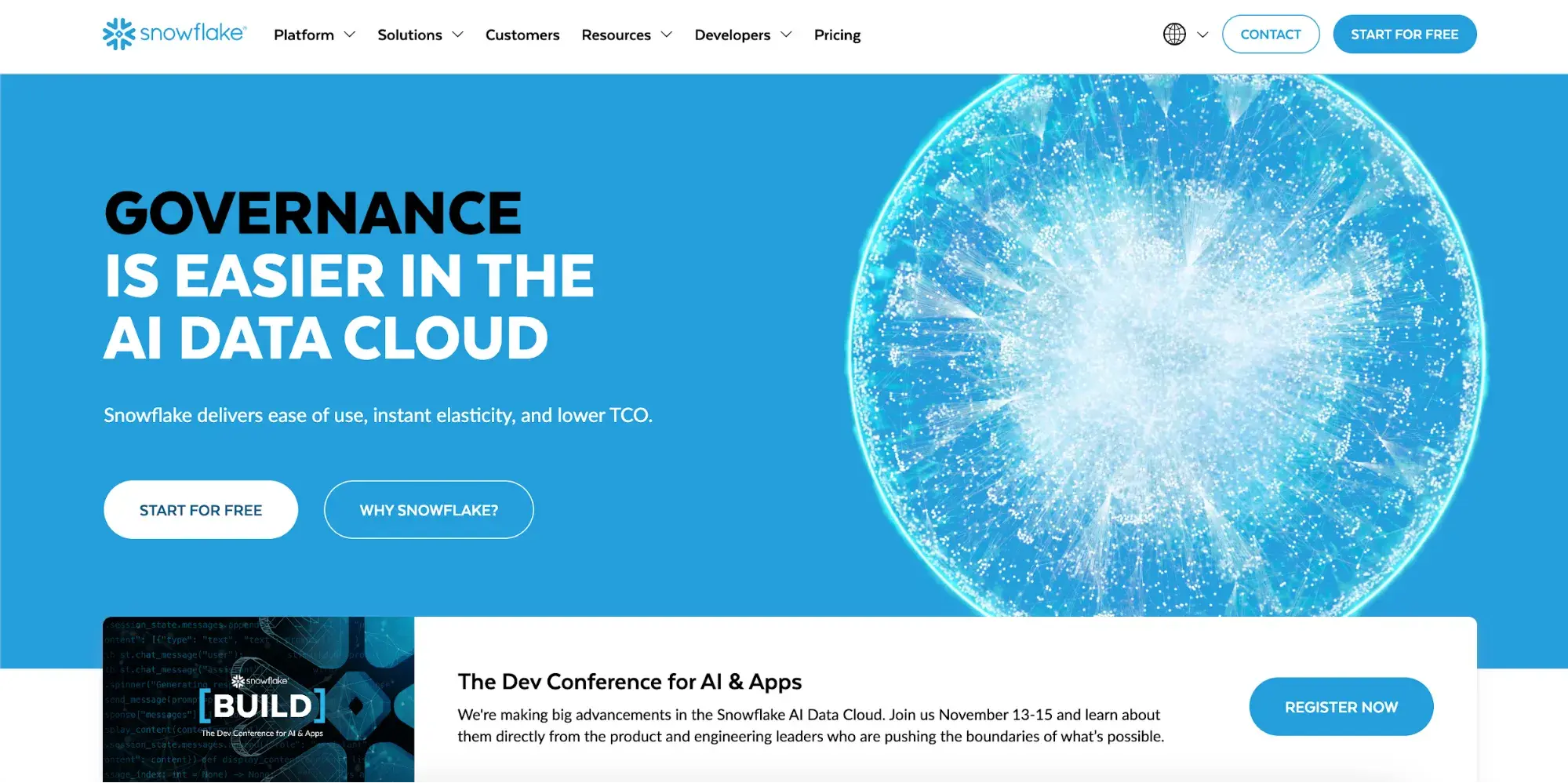
Ease
All the data in the world can’t improve company efficiency if your customer data platform is too difficult for you (and your team) to use. Company-wide adoption relies on how user-friendly the platform is for your team.
Anything that’s not automatically collected needs to be input manually, such as at-home customer support visits from company reps who work in the field. Avoid the mistake of using a customer data platform that’s so technical only certain teams feel comfortable accessing it. This leads to incomplete pictures and frustration.
Insight: A steep learning curve is the #1 complaint in customer reviews for data platforms.
I looked for a statistic on the cost of a slow team-wide software adoption, but then I realized I didn’t need one; we all know how bad it is because we’ve all been there before. It’s like pulling teeth to get team members to use a platform that they don’t like, and it’s costly when team members drag their feet.
Consider: Twilio Segment, whose online reviewers specifically mention how lightweight and easy to use the platform is.
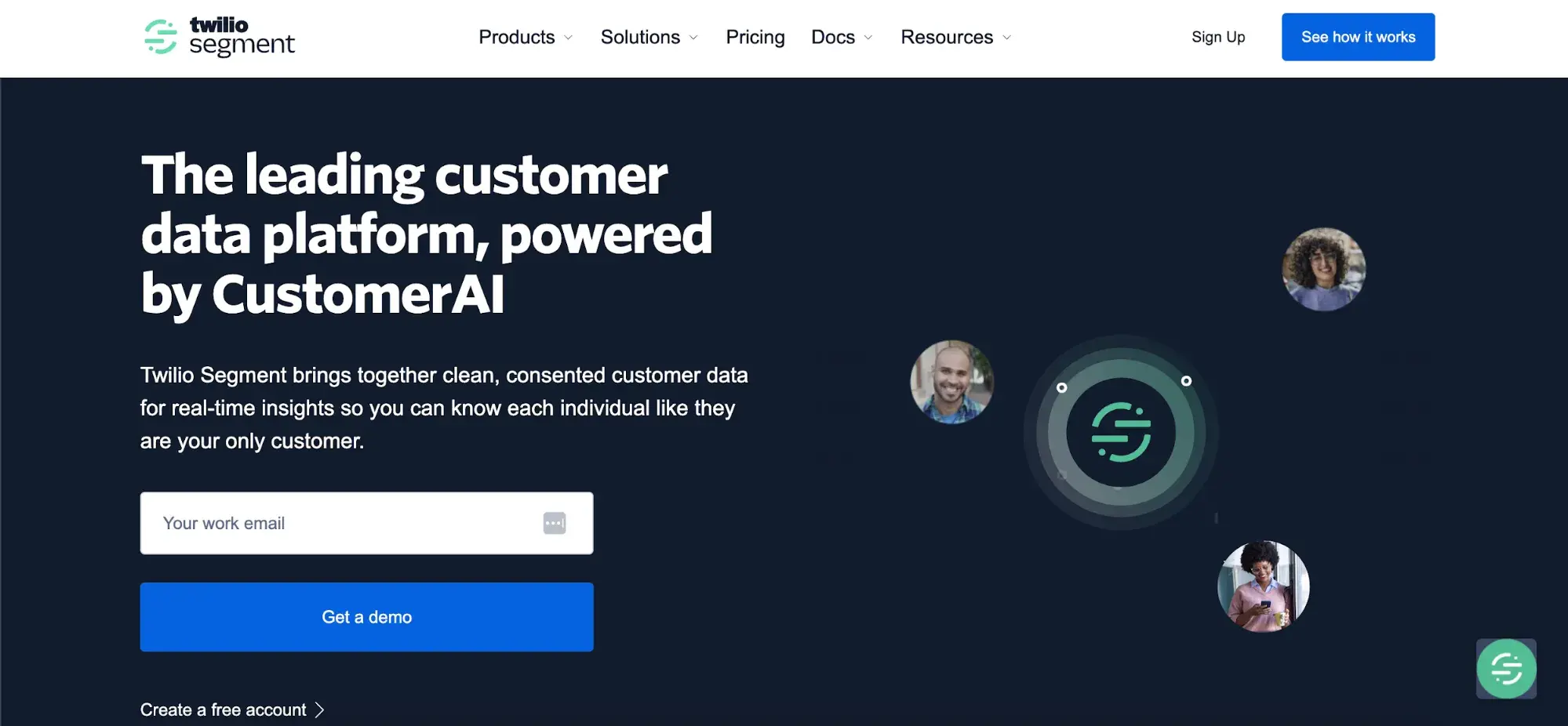
Customer Support
You’ll need help along the way to take such a vast, complicated tool and tailor it to your specific customer data needs; a good tool will provide excellent support for you along that journey.
All customer data platforms, no matter how user-friendly, will require assistance from customer support. Good customer support in a CDP means quick response times, support reps who deeply understand the product, and a team who is also invested in helping you use it correctly.
Consider: ActionIQ, which gets praise from online reviewers for its customer service. It gets top marks from existing customers — Gartner reported that 100% of surveyed participants recommended ActionIQ to others.
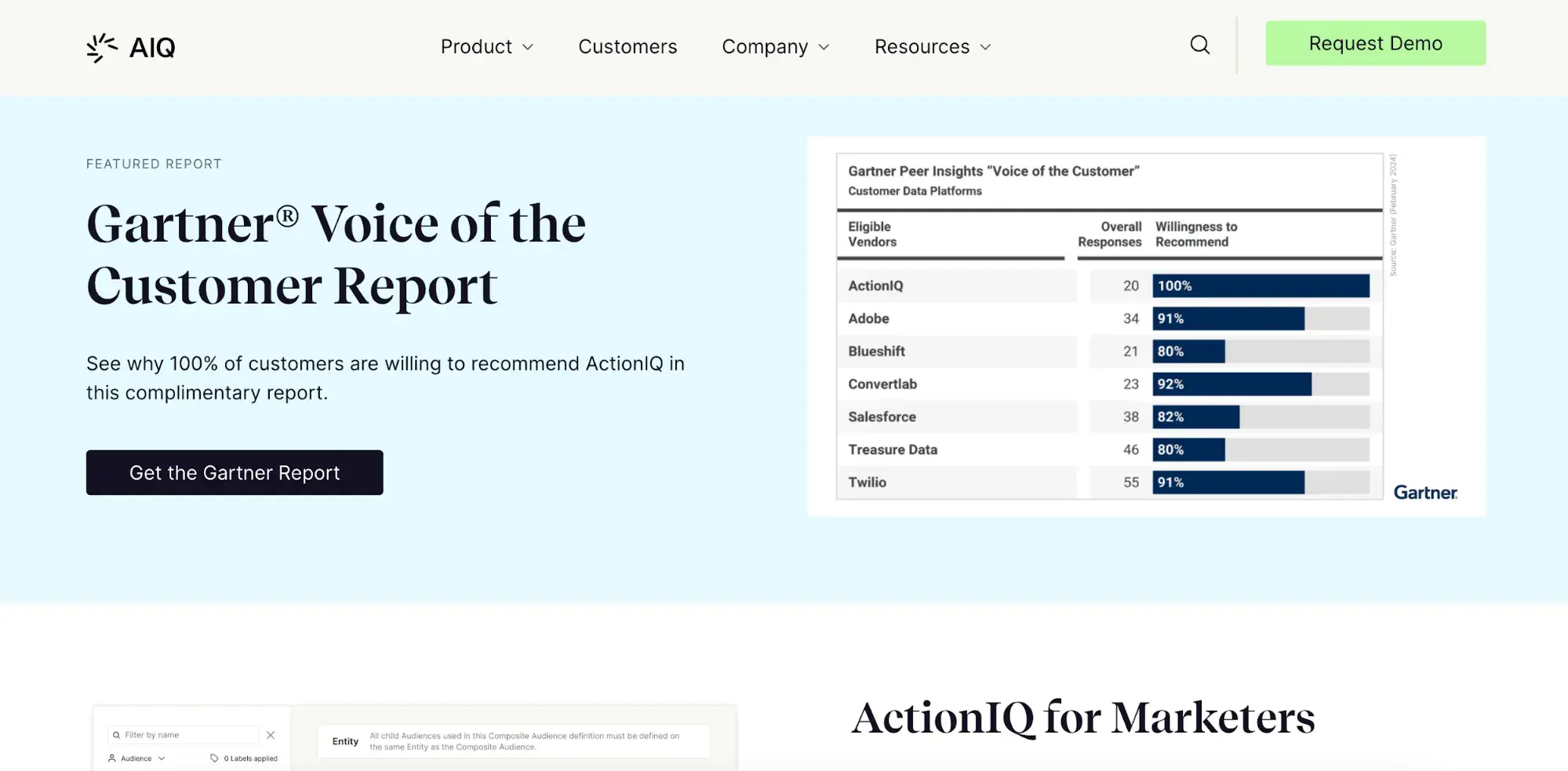
Hit the Ground Running
Constantly evolving data regulations are making it more difficult to collect data, which makes the data you have available to you even more precious. Building your company’s data infrastructure may be intimidating upfront, but it’s going to create opportunities and insights that are well worth the time.
I hope that these tools and tips will help you feel empowered (instead of overwhelmed) and get a tool that fits your needs perfectly.

An Introduction to Data Analytics
Unlock the power of data and transform your business with HubSpot's comprehensive guide to data analytics.
- Fundamentals of data analytics
- Different types of data analytics
- Data visualization
- And more!
Download Free
All fields are required.




![AI Data Protection: How To Mitigate Risk While Using AI [Expert Advice]](https://53.fs1.hubspotusercontent-na1.net/hubfs/53/ai-data-protection-1-20241115-894829.webp)
